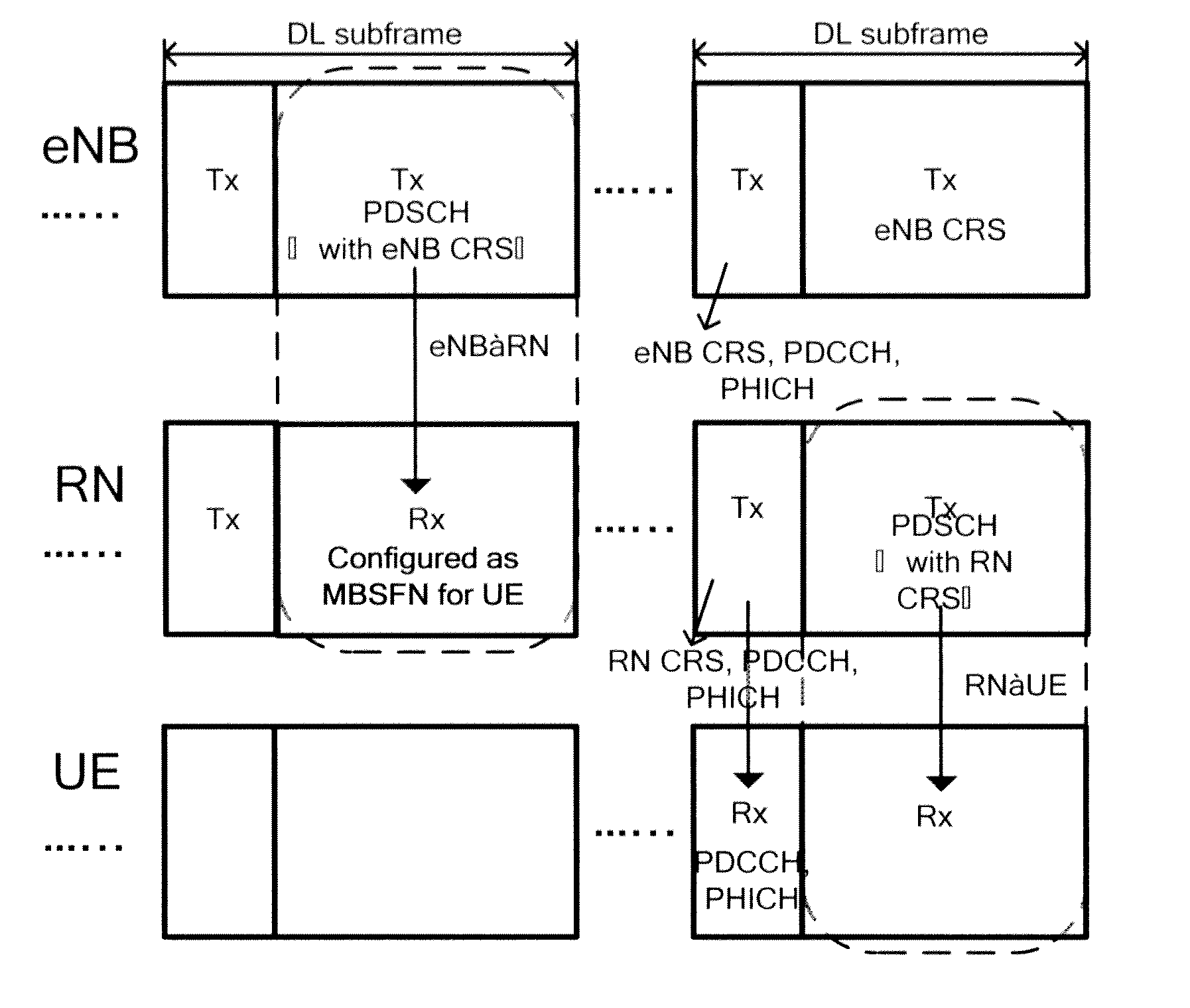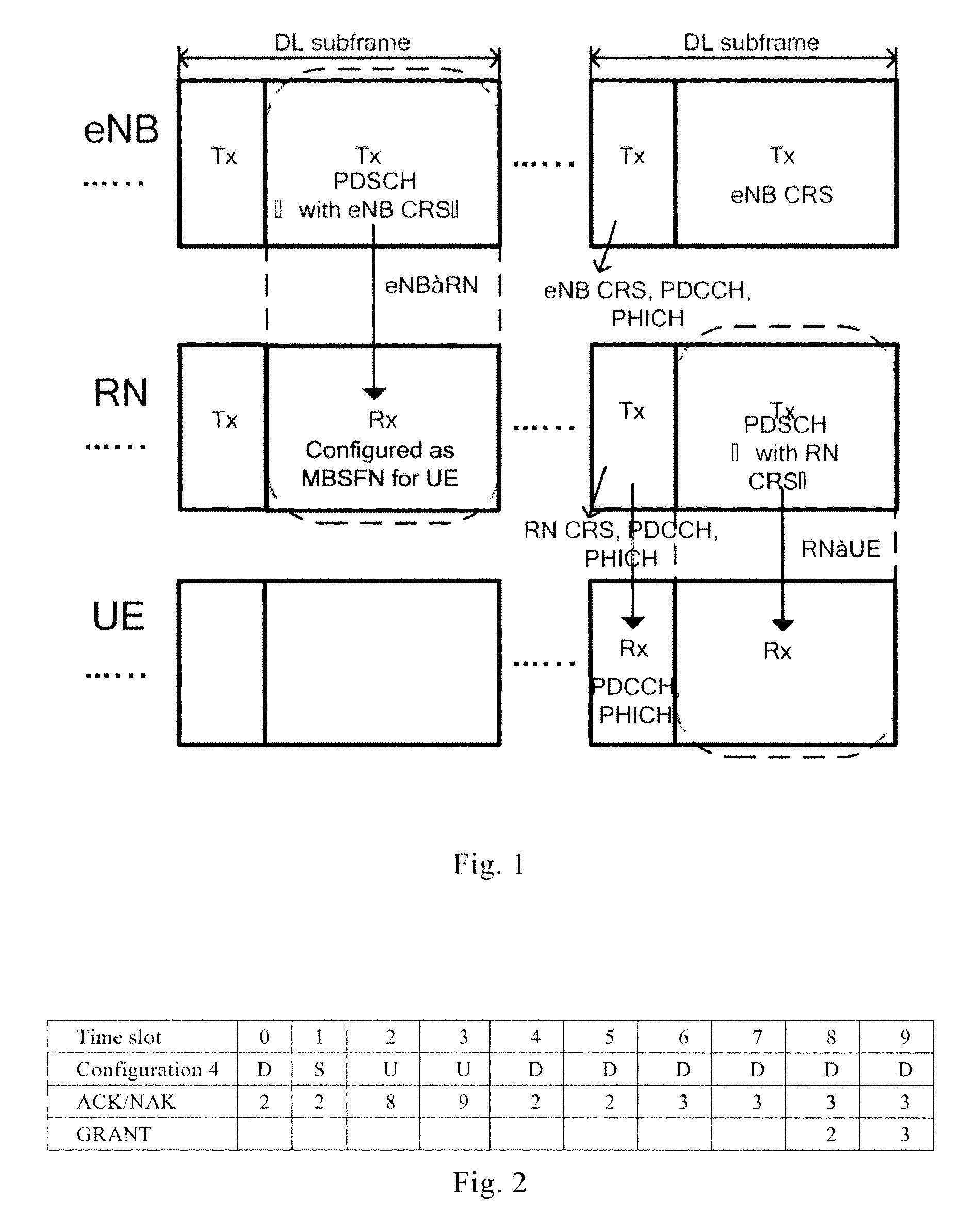Methods and devices for wireless relays
a wireless relay and wireless technology, applied in the field of wireless relay networks, to achieve the effect of increasing the flexibility of the system, reducing the cost of operation, and increasing the throughput of data information
- Summary
- Abstract
- Description
- Claims
- Application Information
AI Technical Summary
Benefits of technology
Problems solved by technology
Method used
Image
Examples
first embodiment
The First Embodiment
[0030]According to an aspect of the embodiment in the invention, the method of a first superior device and a second superior device collaboratively communicate with a subordinate device is specified as below.
[0031]In the embodiment, a first base station device eNB1 and a second base station device eNB2 collaboratively communicate with UE.
[0032]Firstly, eNB2 obtains transmission instruction information, which instructs eNB2 to transmit data information to UE in a preset subframe.
[0033]In one scenario, the transmission instruction information is provided by eNB1:[0034]eNB1 determines that eNB2 transmits data information to UE in a preset subframe;[0035]then eNB1 transmits the corresponding instruction information to eNB2.
[0036]In another scenario, the transmission instruction information is provided by a third party communication coordinating device:[0037]the communication coordinating device determines that eNB2 transmits data information to UE in a preset subfram...
second embodiment
The Second Embodiment
[0045]According to an embodiment of the invention, the process of that the RN relays the data information from eNB to UE, in a relay network based on LTE-A protocol, will be specified as below. It should be appreciated that the scenario mentioned does not limit the invention, and the invention is still applicable to other protocols and relay scenarios, for instance, RN2 relays the data information from RN1 to UE.
[0046]Firstly, in step of S1, by scheduling, eNB determines the preset subframe which is used for transmitting the data information from RN to UE, for instance, eNB schedules RN to transmit data information to UE in downlink subframe #2. Preferably, eNB further determines subcarrier, time slot, etc. in downlink subframe #2 which is used for transmitting the data information from RN to UE.
[0047]Later, in step of S2, eNB transmits transmission instruction information as a result scheduled by eNB to RN through a control channel e.g. PDCCH, the transmission ...
third embodiment
The Third Embodiment
[0072]In the embodiment, the first base station device eNB1 and the second base station device eNB2 collaboratively communicate with UE. The first base station device eNB1 comprises an apparatus 1 which is used for communication with UE in cooperation with eNB2, the apparatus comprises a controlling means 12, and preferably further comprises a determining means 10 and a providing means 11. The second base station device eNB2 comprises an apparatus 2 which is used for communication with UE in cooperation with eNB1, the apparatus comprises an obtaining means 20 and a transmitter 21. In another scenario, the network still has a third party communication coordinating device, which comprises an apparatus 3 used for coordinating the first base station device eNB1 and the second base station to communicate with UE, and the apparatus comprises a determining means 30 and a providing means
[0073]Firstly, the obtaining means 20 of the second base station device eNB2 obtains ...
PUM
 Login to View More
Login to View More Abstract
Description
Claims
Application Information
 Login to View More
Login to View More - R&D
- Intellectual Property
- Life Sciences
- Materials
- Tech Scout
- Unparalleled Data Quality
- Higher Quality Content
- 60% Fewer Hallucinations
Browse by: Latest US Patents, China's latest patents, Technical Efficacy Thesaurus, Application Domain, Technology Topic, Popular Technical Reports.
© 2025 PatSnap. All rights reserved.Legal|Privacy policy|Modern Slavery Act Transparency Statement|Sitemap|About US| Contact US: help@patsnap.com



